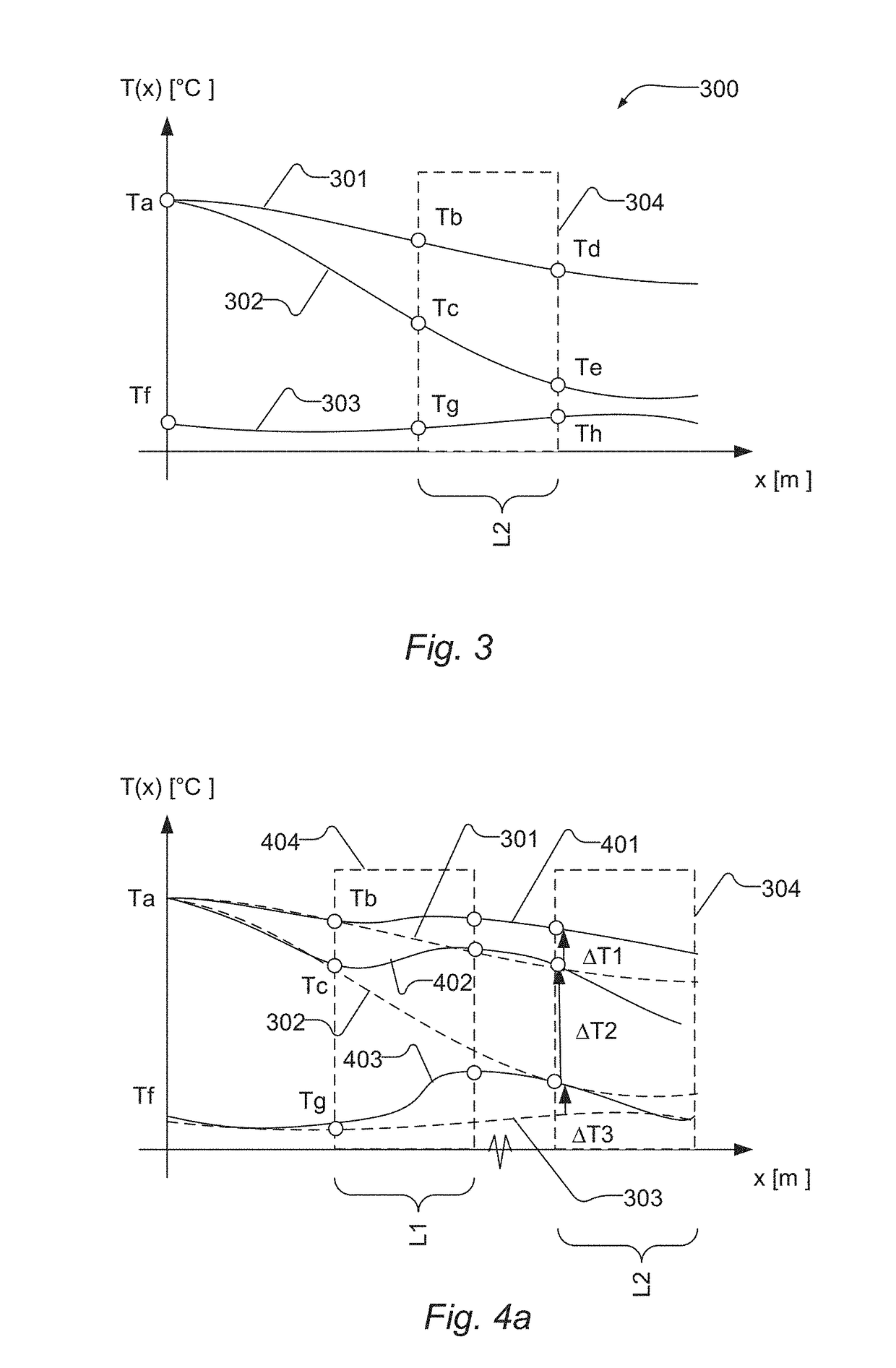Production line and method for processing food products
a technology which is applied in the field of production line and processing method of food products, can solve the problems of inability to contact the transducer, require excessive processing time, and not always possible, and achieve the effect of improving the effect of the second antimicrobial treatmen
- Summary
- Abstract
- Description
- Claims
- Application Information
AI Technical Summary
Benefits of technology
Problems solved by technology
Method used
Image
Examples
first embodiment (
Processing of Poultry, Whole Birds)
[0193]Examples of food products processed in accordance with the first embodiment may comprise whole birds of chicken, turkey, ostrich, game hen, squab, guinea fowl, pheasant, duck, goose, emu, or a combination thereof.
[0194]At the pre-processing facility, livestock of birds are received, stunned and then slaughtered to deliver eviscerated bird carcasses. The eviscerated bird carcasses have a temperature of about 32-45° C. After evisceration the bird carcasses are washed in an inside-outside bird washer which uses a large amount of water and thereby typically lowers the temperature to below about 32° C. e.g. about 28° C. The temperature depends among other things on the temperature of the water used in the washer which may change with the time of year.
[0195]At a temperature in the range of about 25-34° C. the eviscerated and washed bird carcasses are conveyed to the first processing enclosure 101, wherein the surface temperature of the carcasses or...
second embodiment (
Poultry, Cut-Up Parts)
[0200]Poultry carcasses may be processed as described in connection with the first embodiment above, with the change that the carcasses proceed to a cut-up station after cooling, optionally via storage at a temperature of 0-4° C. for e.g. about 24 hours.
[0201]For processing of cut-up parts of poultry, pre-processing steps may involve air-chilling wherein the cut-up parts of poultry are exposed to a chilled circulating air, e.g. at a temperature of 0.5 to 4° C.
[0202]At a temperature in this range the cut-up are conveyed to the first processing enclosure 101, wherein the surface temperature of the cut-up parts or at least a portion thereof is raised to a temperature which is more than 4° C. higher than the surface temperature at the time when the part entered the first processing enclosure. A raise in surface temperature during treatment in the first processing enclosure may be more than about 10° C., 15° C., 20° C., 30° C., or 40° C. A surface temperature of at ...
third embodiment (
Meat, Pork / Beef)
[0206]Examples of food products processed in accordance with the third embodiment may comprise cut-up parts of pork or beef.
[0207]At the pre-processing facility 201, livestock are received, stunned and then slaughtered, comprising bleeding, head / shank removal, skinning, evisceration, splitting, and trim to deliver carcasses. The carcasses then have a temperature of typically less than 40° C.
[0208]At a temperature in the range below 40° C. the parts are conveyed to the first processing enclosure 101, wherein the surface temperature of the parts or at least a portion thereof is raised to a temperature which is more than 4° C. higher than when the parts entered the first processing enclosure. A raise in surface temperature during treatment in the first processing enclosure may be more than about 10° C., 15° C., 20° C., 30° C., or 40° C. A surface temperature of at least a portion of the food product at the point in time when it leaves the first processing enclosure may ...
PUM
 Login to View More
Login to View More Abstract
Description
Claims
Application Information
 Login to View More
Login to View More - R&D
- Intellectual Property
- Life Sciences
- Materials
- Tech Scout
- Unparalleled Data Quality
- Higher Quality Content
- 60% Fewer Hallucinations
Browse by: Latest US Patents, China's latest patents, Technical Efficacy Thesaurus, Application Domain, Technology Topic, Popular Technical Reports.
© 2025 PatSnap. All rights reserved.Legal|Privacy policy|Modern Slavery Act Transparency Statement|Sitemap|About US| Contact US: help@patsnap.com



